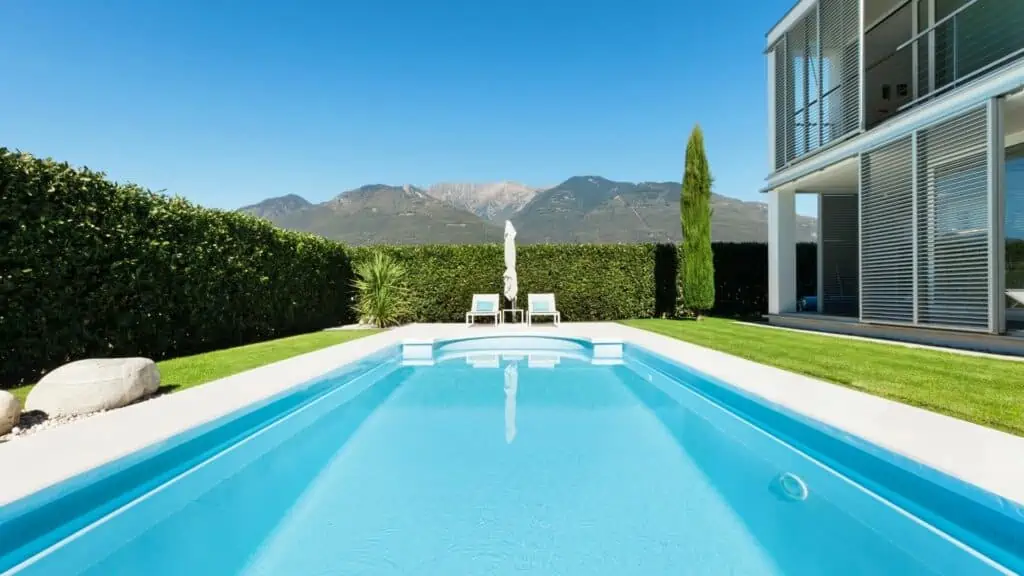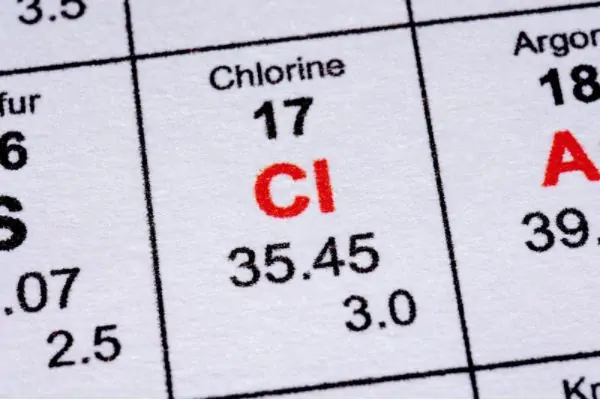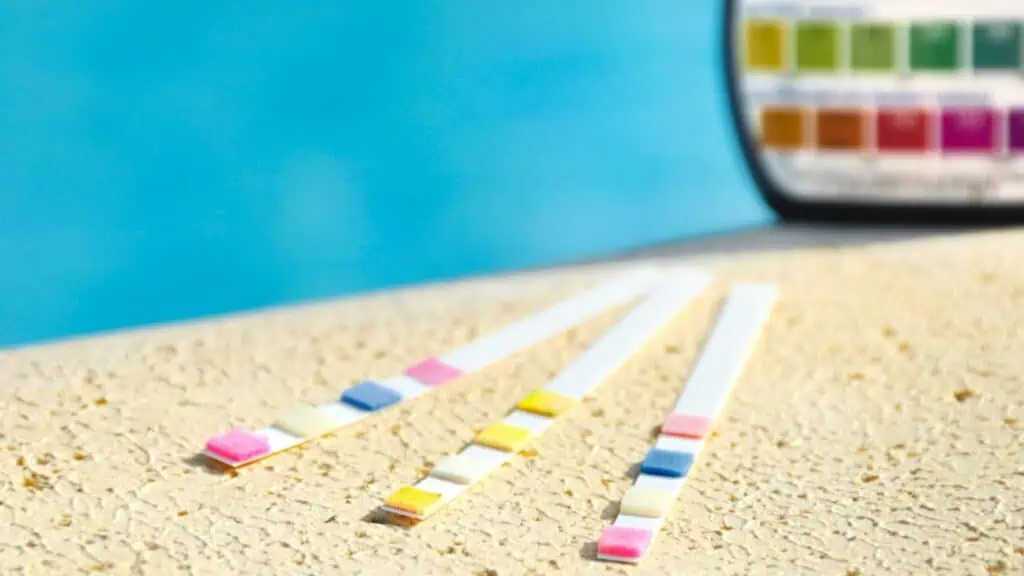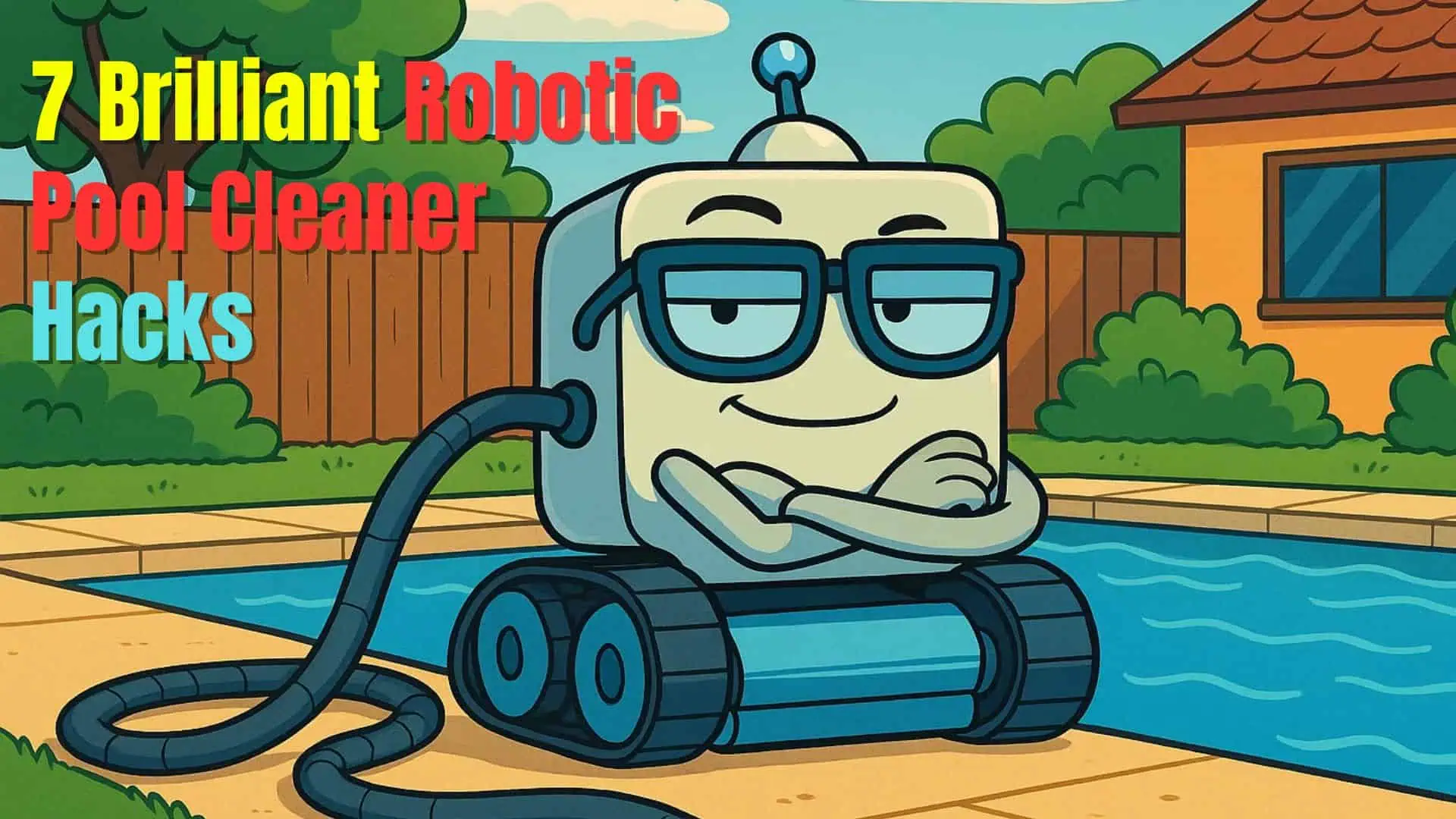Pool maintenance can be intimidating for new pool owners as well as pool veterans. But trust us, it doesn’t need to be complex. We’re here with an easy guide to start up pool chemicals to help you get started with a new pool or restart a pool after a closed season.
Season after season, pool startup chemicals keep the water clean and safe for swimmers. Once you start the pool, you need to continue to monitor and maintain appropriate chemical levels as well. And you must repeat the startup chemical procedure after keeping the pool covered for a season.
If you are new to the world of startup chemicals, you’ve just landed on the right page. We’ll demystify the pool startup process and introduce the chemicals and their required proportions in a pool. Let’s get started!


Table of Contents
- What Chemicals Are Needed for Pool Start Up?
- How to Open a Pool with Start up Chemicals for The First Time?
- Adding the Pool Start up Chemicals
- Using a Pool Start up Kit
- Chemicals for Saltwater Pool Start Up
- Chemistry and Ideal Balance in Swimming Pool Water
What Chemicals Are Needed for Pool Start Up?
All swimming pool chemicals play a unique role in the pool start up process when opening your pool to ensure a chemical balance. Right from ensuring the right pH level to maintaining the calcium hardness, each requires a separate chemical.
Let’s quickly explain the chemicals needed for pool start up:
Chlorine
This chemical acts as an active sanitizing agent. Without chlorine, your swimming pool is nothing but a pool of germ-filled water. Chlorine kills these germs and other microorganisms in the pool water.
When added to a swimming pool, it produces a weak acid known as hypochlorous acid. This kills bacteria such as salmonella and E. coli, as well as germs that cause viruses such as diarrhea and swimmer’s ear.
You can use chlorine in the following forms:
- Chlorine Tablets
- Chlorine Granules
- Liquid Chlorine
Soda Ash
Commonly known as sodium carbonate, soda ash is a pool chemical with high alkalinity and a pH ranging from 11.3 to 11.7 approximately. This startup chemical’s objective is to raise the pH of your pool while simultaneously increasing the alkalinity levels.
Again, this chemical keeps your swimming pool clean and clear. Read my post How to raise pH in pool for more details.
Baking Soda
This chemical essentially spot treats algae and also clears cloudy pool water. Baking soda, commonly known as sodium bicarbonate, has a pH of 8 and is inherently alkaline.
When you add baking soda to your pool water, you elevate the pH and alkalinity, which improves stability and clarity. Baking soda is the principal active component in many commercial pool alkalinity-raising products. See What does baking soda do to a pool for more information.
Muriatic acid
As opposed to baking soda or soda ash, this acid decreases the pH levels of your swimming pool. It is essential to add this acid to balance out the pH levels when they have become too high.
Additionally, it is quite useful for cleaning cartridge filters and it removes stains from the pool like a charm.
Bromine
This chemical is the most popular chlorine substitute. Bromine is used in swimming pools as a sanitizer, oxidant, and algaecide. It is more durable than chlorine as well.
Many people often prefer bromine over chlorine because it works better in warmer temperatures (think hot tub). The compounds in bromine react differently than chlorine and are more effective in cleaning in high temperatures by destroying germs and pollutants.
Cyanuric acid (CYA)
This acid is a popular chlorine stabilizer in swimming pools that are exposed to continuous sunlight. It helps to prevent chlorine loss by shielding the pool’s free chlorine from the sun’s UV rays.
CYA effectively lowers the amount of chlorine required to maintain optimal sanitizer levels. It also helps the chlorine molecules do their job more effectively.
Algaecide
This is not necessarily a startup chemical but necessary nonetheless. The presence of algae may make your pool look cloudy.
Liquid Algaecide is a potent algae depressant. It inhibits algae development and keeps pools sparkling clean.
Metal Remover
This is another chemical that balances the effects of other startup chemicals. Heavy metals in the pool produce stains when chlorine is used or due to high pH levels.
Metal remover works by eliminating heavy metals from the water through the filter, leaving the water clean and free of heavy metals.

How to Open a Pool with Start up Chemicals for The First Time?
Well, these pool startup chemicals aren’t exactly the first things you need to treat your inground pool, above-ground pool, or Intex pool, whether opening for the first time or after the winter.
Firstly, let’s briefly explain the pool opening process before jumping on to the startup chemicals.
Here is a short step-by-step guide to open a pool for the first time:
- First clean the pool cover of any debris, leaves, water, or anything else.
- Remove the cover and pull any winter plugs or other accessories out.
- Replenish the pool with fresh water using a garden hose to the correct water level.
- Run the pool filtration system.
- Clean the pool surfaces and sanitize the pool water.
- Use the pool test kit (see below) or you can take a water sample to your local pool store for testing.
- Add the startup chemicals to balance the pH levels, calcium, and alkalinity (See below).
- Retest the pool water.
Adding the Pool Start up Chemicals
Now, you need to fully understand the steps to add start up chemicals to open your pool. Hopefully, this will answer the following questions as well:
- What pool chemicals should you adjust first?
- What chemicals do you put in a pool for the first time?
- How much chlorine do you add to the pool for the first time?
After testing water, you can get on to the startup chemicals!
Step 1: Adjust Total Alkalinity
So, you should adjust the total alkalinity first in your pool. The total alkaline material in the swimming pool also affects pH balance as alkaline is also a pH stabilizer.
- If your pool’s alkalinity is below 80 ppm, you need to add an alkalinity amplifier such as baking soda, up to 25 pounds per 10,000 gallons of pool water.
- And if the alkalinity is above 120 ppm, you must lower the Total Alkalinity using muriatic acid.
Step 2: Get the Ideal pH Level
After getting your water to the right alkalinity, you can move on to adjusting its pH level. Too low a pH means your water is acidic. And a very high pH level indicates basic water.
- Add a pH increaser, such as sodium carbonate (soda ash), to increase pH. Ideally, 6 oz of soda ash elevates the pH of a 10,000-gallon pool by 0.2.
- Add muriatic acid to decrease the pH levels.
- If the pH keeps deviating, your Total Alkalinity may be too low. In that case, add baking soda to boost the alkalinity and keep the pH stable.
Step 3: Balance the Calcium Hardness
If calcium deposits grow in your swimming pool, you may observe a white line (scale) appearing along the waterline. This scale accumulation can harm your pool’s material and equipment, It also makes the pool look cloudy.
- If you need to raise the calcium hardness of the pool, add calcium chloride and follow the label directions.
- If you need to reduce the hardness of the pool, partially drain it and replenish it with new water. Also, use flocculants to gather extra calcium and a pool vacuum to remove it.
Step 4: Sanitize the Swimming Pool
As mentioned earlier, you need to sanitize the pool with chlorine to prevent the growth of microbes and bacteria. This ensures swimmer safety and health. Apart from chlorine, there are other types of sanitizers as well.
Have a look at the ideal level of sanitization required for each:
- Chlorine: 1-3 ppm. Higher is better. This prevents algae growth.
- Bromine: 3-5 ppm. It is especially great for a hot tub.
- Biguanide: 30-50 ppm
- Minerals: 5 ppm
Step 5: Adding CYA
Although CYA is available in pool shock, you must add and maintain it to help chlorine survive the burn of the UV rays.
Step 6: Maintaining TDS
Anything (including chlorine, metals, or contaminants from swimmers’ bodies) can contribute to a rise in the pool TDS levels (total dissolved solids). High TDS may be unsafe and can also cause corrosion.
TDS is reduced in the same manner as salt, calcium hardness, nitrates, or CYA. Drain and dilute the water in the pool. If drainage is not an option, reverse osmosis filtering can help.
Step 7: Shock the Pool
You can shock the pool by super chlorinating the pool (even more than the ideal chlorine level). Follow these steps to effectively chlorine shock the pool:
- Warm water in a 5-gallon bucket
- Mix a one-pound bag of pool shock slowly into this water.
- Stir the shock with a stick until it dissolves.
- While strolling around the pool, slowly dump the bucket of shock water into the pool, concentrating on the deep end.
- Wait for six hours, test the water, and make chemical adjustments as needed.
Using a Pool Start up Kit
A pool start up kit is a complete package of start up chemicals needed for sparkling clean water that is safe for swimmers. Open the pool without any hassles as the pool start up kit will provide all chemicals in one. But how do you use a pool start up kit?
These start up kits often contain chemicals such as algaecides, pool shocks, metal balancers, and water test strips among others. Just read the package instructions for each and get started on opening the swimming pool.
You can buy kits that include everything you need to make life easier such as the In-the-Swim pool startup kit below.
Chemicals for Saltwater Pool Start Up
Starting up saltwater pools is slightly different from other pools. But fret not! You just need one extra step to start up a saltwater pool.
After balancing the pool chemical levels using start up chemicals, go on to add salt to the pool. When the salt level is in the proper range for the chlorinator and the rest of the pool chemicals are balanced, you may now switch on the salt chlorinator!
Test your pool and verify your chlorine levels after 24 hours. If the level is too high, reduce the chlorine output of your salt generator by 10%. If the output is too low, raise it by 10% or so.
Chemistry and Ideal Balance in Swimming Pool Water

You begin the opening process of your swimming pool by testing the chemical levels in the water first. After this step, you can go ahead with your startup chemicals.
Testing the Water
So, you first need to invest in a pool testing kit to gauge the chemical levels in the water. After this, you can go on to adjust the chemical levels in the water.
But how do you test your pool’s water? In a typical residential or commercial pool, you must use testing kits to routinely check for the following:
- Chlorine level
- pH
- Acid demand
- Total alkalinity
- Calcium hardness
- Cyanuric acid levels
- Total dissolved solids (TDS)
Ideal Chemistry of A Swimming Pool
Now to understand what startup chemicals you need to put in your swimming pool, you must understand the ideal harmonious balance of a pool. The following ppm (parts per million) range is ideal:
| Chlorine | 1-3 ppm |
| pH | 7.2-7.6 |
| Alkalinity | 80-120 ppm |
| Calcium Hardness | 180-220 ppm |
| Cyanuric Acid | 30-50 ppm |
| Total Dissolved Solids (TDS) | Below 2000 ppm |
You will add the swimming pool chemicals to bring your pool chemicals to this ideal range.
These are the test strips I use – JNW Direct Pool and Spa 7 in 1 Test Strips








Leave a Reply